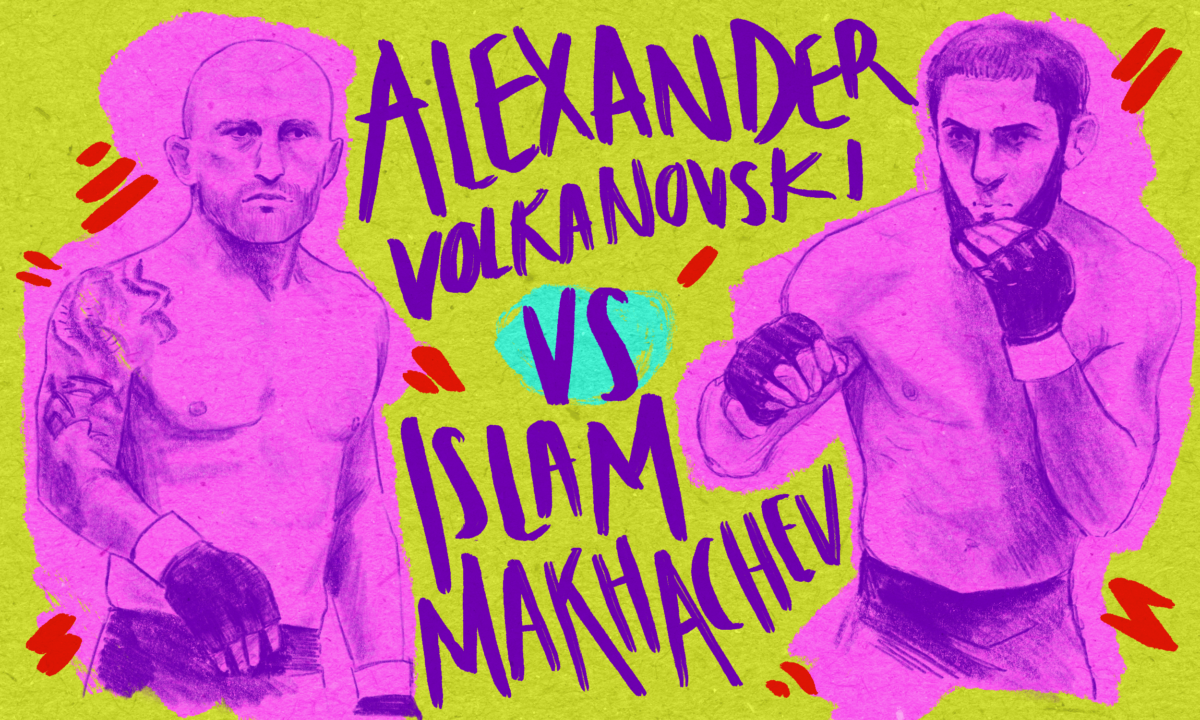UFC 284 had everything for the casual or hardcore MMA fan: highlight reel knockouts, crafty submissions, and a crowd primed for violence
Islam Makhachev prevails and takes over as the #1 P4P fighter in the world
To the dismay of the Australian fans in attendance, UFC 284 did not disappoint as defending lightweight champion Islam Makhachev (24-1) put an end to Alexander “The Great” Volkanovski’s 22-fight win streak in controversial fashion. Notching the win by unanimous decision, Mahkachev defended his lightweight belt in enemy territory.
Many thought Makhachev’s superior wrestling would wear Volkanovski (25-2) down, but that wasn’t the case, as the latter’s ability to scramble and avoid compromising positions made for a very compelling fight.
As early as the first round, Volkanovski’s takedown defence was tested, but he passed with flying colours. He was also able to impressively defend his neck with the much bigger Makhachev on his back. With time, the fight slowly became a high-level kickboxing match with both fighters scoring knockdowns. Makhachev was able to show off his underrated striking, whereas Volkanovski displayed his elite takedown defence.
The fight ended with Volkanovski on top, wreaking havoc on Makhachev’s face after he dropped him for the second time. Despite this, the judges gave Makhachev the victory. The scorecards read 48-47, 48-47, and 49-46, leading to a debate on whether or not the right call was made.
I can see a world where Makhachev won, but a 49-46 card is ridiculous. Either way, both the first and second-ranked P4P fighters in the world put on an absolute masterclass, easily surpassing Glover Teixeira vs. Jamahal Hill for fight of the year.
I don’t think Volkanovski’s stock dropped, and would even argue that he still deserves to be the number one P4P fighter in the world.
Hear me out. He went up the UFC’s hardest weight class, stood his ground, and put Makhachev in positions he’s never been in before. A lot of people doubted him, but I have a feeling that’s over. I’m not a huge fan of immediate rematches (especially with Yair Rodríguez looming in the wind), but I’d love to see them run it back this summer.
Yair Rodríguez becomes Mexico’s second UFC champion
As underrated as this fight was, the interim featherweight title fight didn’t disappoint. Rodríguez (16-3) and Josh Emmett (18-3) put on a show, resulting in Rodríguez submitting Emmett at 4:19 of the second round via triangle choke. Rodríguez became Mexico’s second-ever UFC champion and set up a highly anticipated fight against Volkanovski.
Rodríguez’s dynamic taekwondo and the sheer power Emmett brought to the octagon led to a modern-day gladiator fight. It was a kill-or-be-killed situation, leading to multi-knockdowns for both challengers. Rodríguez used his kicks like a boxer uses jabs, stabbing away at Emmett before finally submitting him in the second round.
Given that the featherweight division now has an interim champion, when do we get to see Rodríguez vs. Volkanovski for the title unification fight? If I had to guess, I’d say in June or July, at UFC 289 or 290. My way-too-early pick is Volkanovski via decision. I honestly can’t see anyone beating him at featherweight after his performance at UFC 284.
In the midst of a future champion?
Jack Della Maddalena improved to 14-2 with a flawless performance against veteran Randy Brown (16-5) in the welterweight fight. He knocked him down with ease, mounted him, and choked him out two minutes and 13 seconds into the first round, ending the debate on whether or not he’s ready for a step-up in competition.
Della Maddalena’s now riding a 14-fight win streak, making it hard to argue against him fighting a ranked opponent next. His excellent boxing, quick footwork, underrated grappling, and fantastic head movements make him a very tough opponent for anybody in the top 15.
Are we witnessing a future champion? I’m not sure just yet, but the 26-year-old definitely has a lot of potential.
Australia Shines
All in all, Perth was an excellent place to hold a UFC event. Australia-natives like Della Maddalena, Joshua Culibao, and Justin Tafa were greeted with open arms and had amazing showings. The crowd was ferocious and even though the beloved Volkanovski didn’t win, the fans were still graceful in defeat.
